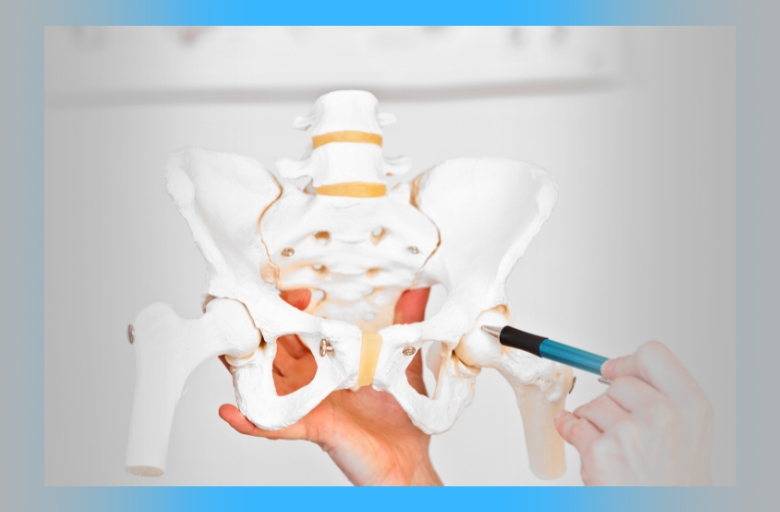Recovery Exercises After Hip Replacement Surgery | Dr. Mittal
Published on March 28, 2024 By Dr. Vivek Mittal
Introduction
What Recovery Exercises Are Recommended After Hip Replacement Surgery? This is a common question for individuals undergoing hip replacement surgery to alleviate pain and restore mobility. While the procedure significantly improves quality of life, recovery exercises after hip replacement surgery play a crucial role in strengthening the hip joint, enhancing flexibility, and ensuring a smooth rehabilitation process. Following a structured exercise plan is essential for regaining function and preventing complications.
Early Post-Operative Exercises (Within 24-48 Hours)
-
Ankle Pumps: Move your ankles up and down while lying in bed. This helps stimulate blood circulation and prevents blood clots.
-
Quadriceps Sets: Tighten the thigh muscles while keeping your leg straight. Hold for a few seconds before relaxing. This helps maintain muscle tone.
-
Gluteal Sets: Squeeze your buttock muscles together and hold. Strengthening these muscles enhances hip stability.
Range of Motion Exercises
-
Ankle Rotations: Rotate your ankles clockwise and counterclockwise to maintain flexibility.
-
Knee Flexion and Extension: Gently bend and straighten your knee to improve mobility.
-
Hip Flexion and Extension: While lying on your back, slide your operated leg toward your chest and then straighten it.
Strengthening Exercises:
● Straight Leg Raises: Lie on your back and lift your operated leg straight up while keeping the knee straight. Hold for a few seconds before lowering it down. This exercise strengthens the quadriceps and hip flexors.
● Hip Abduction and Adduction: Using resistance bands or a pulley system, move your leg away from your body (abduction) and then back toward the midline (adduction). This exercise targets the muscles responsible for stabilising the hip joint.
● Standing Hip Extension: Stand while holding onto a stable surface for support. Extend your operated leg backward while keeping your back straight. This exercise strengthens the hip extensor muscles.
Balance and Stability Exercises:
● Single Leg Stance: Stand on your non-operated leg while holding onto a sturdy object for support if needed. Try to maintain balance for as long as possible. This exercise improves proprioception and stability.
● Balance Board Exercises: Using a balance board or cushion, perform various balancing exercises to challenge your stability and enhance core strength. Start with simple exercises and gradually progress to more advanced ones.
Functional Exercises:
● Sit-to-Stand Transfers: Practise sitting down and standing up from a chair using proper technique and without assistance. This exercise mimics a common daily activity and helps improve functional mobility.
● Stair Climbing: Start with climbing a few steps while holding onto a railing for support. As you progress, gradually increase the number of steps and eventually practise climbing stairs without assistance.
Flexibility Exercises:
● Hamstring Stretch: Lie on your back and gently pull your operated leg toward your chest using a towel or strap. Hold the stretch for 15-30 seconds to improve hamstring flexibility.
● Quadriceps Stretch: Stand while holding onto a stable surface for support. Bend your operated knee and gently pull your heel toward your buttocks until you feel a stretch in the front of your thigh. Hold for 15-30 seconds.
Aquatic Therapy: Water-based exercises can be highly beneficial for individuals recovering from hip replacement surgery. The buoyancy of water reduces stress on the joints while providing resistance for muscle strengthening. Aquatic exercises can include walking, leg lifts, and gentle swimming motions.
Walking: Gradual progression of walking is essential for rebuilding endurance and promoting cardiovascular health. Begin with short, slow walks using an assistive device such as a walker or cane if necessary. As strength and confidence improve, gradually increase walking distance and pace.
Guidelines for Safe Exercise- Dr. Vivek Mittal
● Always consult with your doctor or physical therapist before beginning any fitness programme following hip replacement surgery.
● Begin with gentle motions and work your way up to more difficult exercises, paying attention to your body and avoiding any that make you uncomfortable.
● Maintain good form and technique when exercising to avoid injury and maximise benefits.
● Maintain hydration and take breaks as needed during workout sessions.
● A well-rounded rehabilitation programme should include stretching, strengthening, balancing, and functional activities.
● Watch for symptoms of problems, such as increasing pain, swelling, or redness, and get medical assistance if necessary.
Recovery from hip surgery takes effort, patience, and a regular exercise regimen. Individuals can improve their rehabilitation and restore independence in everyday activities. This can be done with the help of exercises suggested by the best Hip Replacement Surgeon In Delhi, Dr. Vivek Mittal focusing on strength, flexibility, balance, and function.
Working together with healthcare specialists, such as physical therapists, may assist personalise an exercise programme to specific needs, ensuring a safe and effective recovery journey. Remember, consistency and moderate growth are essential for long-term success in hip replacement recovery.




